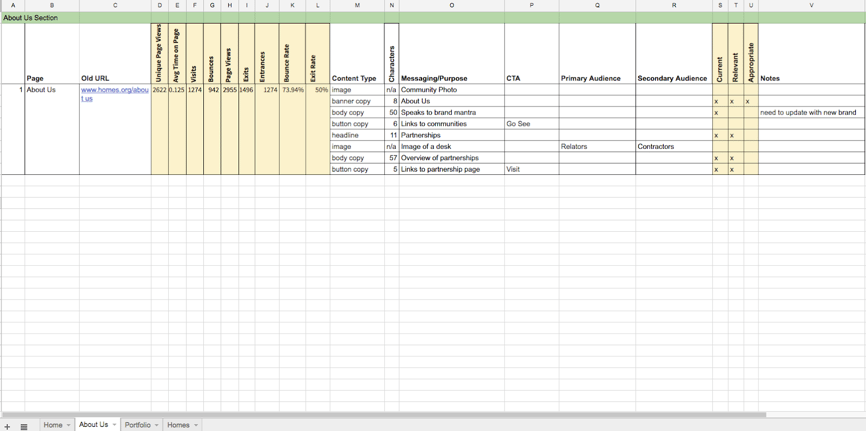In, “The Life Changing Magic Of Tidying Up,” organizational consultant Marie Kondo introduces her KonMari Method™, “a way of life and state of mind that encourages cherishing the things that spark joy in people’s lives.” It is a step-by-step process to never living in clutter again; everything in your home and life will have a purpose.
While reading this book, I couldn’t stop seeing the parallels between The KonMari Method™ and content strategy. And I started to get excited. Really excited.
Why? Because most people don’t fully understand what a content strategy is, let alone its magic.
A content strategy includes planning for the creation, delivery, and governance of user-friendly content in order to meet the needs of a business and its customers. In the context of tidying up, a content strategy is a lot like cleaning your house.
In the same way that KonMari can bring clarity and purpose to material things in your life, a strategy can bring clarity and purpose to your content, helping you meet both your business goals and your customer’s needs.
Here’s how to get started:
Step 1: Visualize your goals
The first step in Kondo’s method is to visualize the life you wish to have with a clutter-free space. What does that look like? When first conducting a content strategy, you must do the same. What are your business goals? What are the needs of your target audience?
To help answer these questions, I recommend conducting a card sorting workshop. This exercise helps you visualize who you want to be in relation to your audience needs. You’ll need to prepare a deck of about 120-200 cards, each bearing an adjective or succinct phrase that describes how your brand–and other brands–relate to, and are seen by, your industry.

Source: Appropriate, Inc.
To conduct the workshop, sort your cards into the following categories:
Who do you want to be?
Who are you today?
Who are you not?
Once this first sort is complete, discard all the cards that fell into the “who are you not” pile. Now look at the cards in “who you are today” and discard all the ones that don’t align with the vision of your brand moving forward. Then combine “who do you want to be” with what remains in “who are you today.” From that single pile, select only the adjectives that best meet the needs of your customers and your business goals moving forward. Finally, prioritize these in order of importance.
At the end of this exercise, you will have prioritized your brand’s communication goals and outlined a message architecture. This will guide your content planning, design, and delivery process.
Step 2: Only keep content that sparks joy
Marie Kondo asserts, “To truly cherish the things that are important to you, you must first discard those that have outlived their purpose.” The same goes for your content. To do this, you will need to conduct a content audit. Start by using a web crawler to view all the content on your website. Then start sifting.
If content fails to map back to your message architecture, let it go. Only keep content that will bring your users joy.
More importantly, fight the urge to put content in archives. Most likely, it no longer serves a purpose.
Step 3: Audit one category at a time
Auditing all your content at once can be overwhelming, especially if it has become disorganized (most does over time). I recommend culling content, starting one primary navigation menu category at a time, and creating excel tabs for each bucket.

Step 4: Review content in the right order
Moving left to right, address quantitative factors first, then qualitative. Quantitative factors can include page URLs, Google Analytics metrics, content types by page, character counts, etc. Qualitative factors can include voice and tone, messaging, audiences, and calls-to-action. Only keep content that is current, relevant, and appropriate. Once you’re done, you can start translating this into an information architecture for your website. Your IA will become an outline of where you will put your content.
Step 5: Put back content in a way that makes sense
The strategy you developed in your message architecture and the gaps revealed in your content audit, will help you identify what content to create and by priority. But before you embark on content creation, you must first identify a clear internal workflow for migration and governance. I also recommend creating editorial style guidelines for your staff. If you’re using a content management system, identify who will be reviewing content, who will be editing it, and who will be publishing it. Train all involved stakeholders. Once completed, there will be no frustrations creating content, because you and your team will have clear guidelines on how to move forward.
Creating new forms of content that bring your customers joy spark deeper relationships with your brand that may have never existed in your previous customer journey. When we decide what should and should not be on our website, we are allowing other forms of action to exist. The KonMari Method™ to content strategy is not just a process, but a mind-set. Once you create a comprehensive content strategy, you will never go back to your old ways of content chaos.






